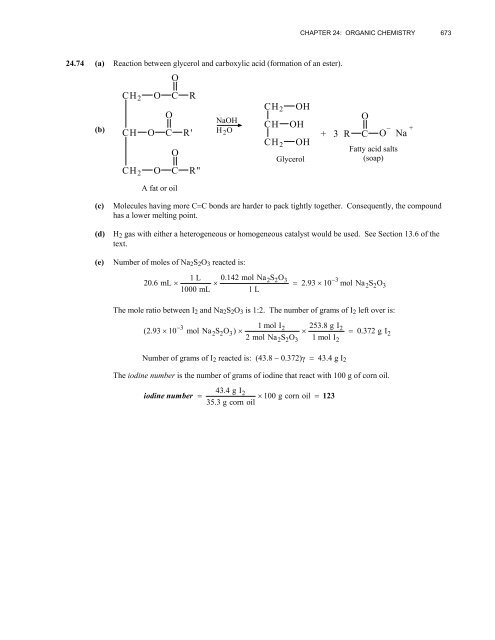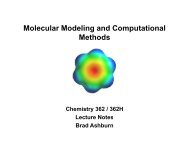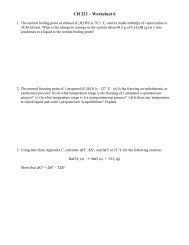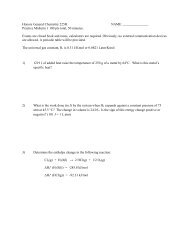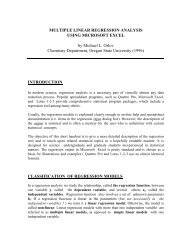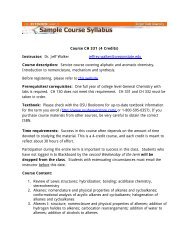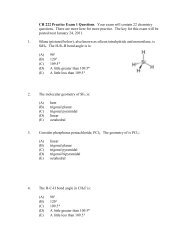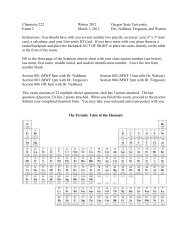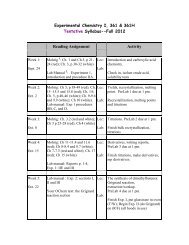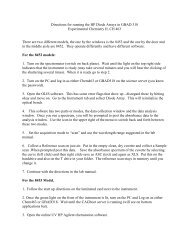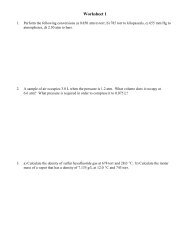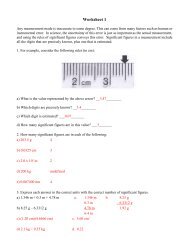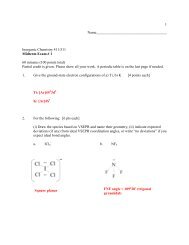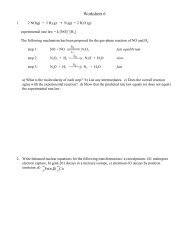Create successful ePaper yourself
Turn your PDF publications into a flip-book with our unique Google optimized e-Paper software.
<strong>CHAPTER</strong> <strong>24</strong>: <strong>ORGANIC</strong> <strong>CHEMISTRY</strong> 673<strong>24</strong>.74 (a) Reaction between glycerol and carboxylic acid (formation of an ester).(b)OCH 2 O COCH O C R'OCH 2 O CA fat or oilRR''NaOHH 2 OCH 2CHCH 2OHOHOHGlycerol+ 3ROCO − Na +Fatty acid salts(soap)(c)(d)(e)Molecules having more C=C bonds are harder to pack tightly together. Consequently, the compoundhas a lower melting point.H 2 gas with either a heterogeneous or homogeneous catalyst would be used. See Section 13.6 of thetext.Number of moles of Na 2 S 2 O 3 reacted is:1L 0.142 mol Na2S2O3−320.6 mL × × = 2.93 × 10 mol Na2S2O31000 mL 1 LThe mole ratio between I 2 and Na 2 S 2 O 3 is 1:2. The number of grams of I 2 left over is:−3 1 mol I2 253.8 g I(2.93 × 10 mol Na 22S2O 3) × × = 0.372 g I22molNa2SO2 3 1molI2Number of grams of I 2 reacted is: (43.8 − 0.372)γ = 43.4 g I 2The iodine number is the number of grams of iodine that react with 100 g of corn oil.43.4 g Iiodine number = 2 × 100 g corn oil = 12335.3 g corn oil


